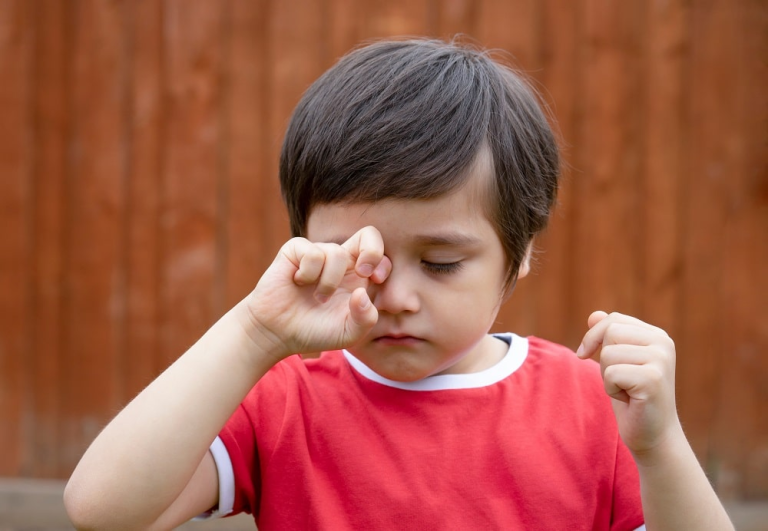How to Know When to Drop the Dream Feed

Is your baby still waking up during dream feeds but barely drinking anything?
Most new parents struggle with broken sleep patterns, wondering if their baby will ever sleep through the night.
Dream feeding seems like a helpful solution in those early months, but it leaves many parents wondering when to stop this nighttime routine.
The good news is that there are clear signs and expert guidelines to help you determine when your baby is ready to drop the dream feed.
Understanding these indicators can make the transition smoother for both you and your little one.
This guide will walk you through the key signs that indicate it’s time to stop dream feeding, the ideal age ranges for making this change, and practical steps to ensure a successful transition.
What is Dream Feeding?
Dream feeding is a technique where parents feed their baby while the child remains asleep or in a drowsy state.
This method typically happens late in the evening, usually between 10 PM and midnight, before parents go to bed themselves.
Gently pick up your sleeping baby to offer a bottle or breast without fully waking them. The baby feeds semi-consciously and then sleeps again. This helps extend the baby’s longest sleep stretch.
Dream feeding is particularly effective for newborns and young infants with shorter sleep cycles. During the first few months, babies need frequent feedings due to their small stomach capacity.
By offering this extra feed while they sleep, parents can help satisfy their baby’s nutritional needs while working toward longer sleep periods.
Why Parents Use Dream Feeding

Many parents use dream feeding to get longer sleep stretches in the early months. This technique offers practical benefits that make nighttime routines easier for the family.
Key benefits include:
- Extending baby’s sleep from 3-4 hours to 6-7 hours straight
- Reducing the number of middle-of-the-night wake-ups
- Creating more predictable nighttime schedules
- Helping parents get maximum rest before the next feeding cycle
- Supporting babies who struggle with frequent night wakings due to hunger
Dream feeding works particularly well because it provides nutrition proactively rather than waiting for crying and fussing to signal feeding time.
This gentle approach helps maintain calm nighttime environments, making it easier for babies to settle back into deep sleep afterward and benefiting both tired parents and growing infants.
Signs That It Might Be Time to Drop the Dream Feed
Your baby will give you clear signals when they’re ready to move past dream feeding. Recognizing these signs helps ensure a smooth transition that works with your baby’s natural development.
1. Baby Sleeps for Longer Stretches Naturally
If your baby consistently sleeps 6-8 hours without waking for feeds, they may no longer need the extra nutrition from dream feeding.
This extended sleep pattern shows their stomach can hold enough milk to sustain them through longer periods. When babies develop this natural rhythm, continuing dream feeds might wake them unnecessarily.
2. Reduced Interest During Dream Feeds
When babies start drinking very little during dream feeds or seem resistant to feeding while drowsy, it often indicates they’re getting sufficient nutrition during daytime feeds.
You might notice them turning away or not latching as readily. This lack of enthusiasm is your baby’s way of saying they’re satisfied with their current feeding schedule.
3. Consistent Weight Gain and Growth
Babies who are meeting their growth milestones and gaining weight appropriately may be ready to drop the dream feed.
Their increased stomach capacity and efficient daytime feeding make the extra nighttime calories less necessary. Your pediatrician’s growth charts will confirm if your baby is thriving without the dream feed.
4. Disrupted Sleep After Dream Feeds
If your baby becomes more restless or takes longer to settle back to sleep after dream feeds, this feeding method may be interfering with their natural sleep patterns rather than helping them.
What once helped your baby sleep longer might now be causing sleep fragmentation. When dream feeds start disrupting rather than supporting sleep, it’s time to reconsider their necessity.
5. Age-Related Readiness
Most babies naturally outgrow the need for dream feeding between 4 and 6 months, when their sleep patterns mature and they can consume larger volumes during daytime feeds.
As babies develop stronger circadian rhythms, they naturally consolidate their sleep and feeding schedules. This developmental milestone makes dream feeding less beneficial and sometimes counterproductive.
The Right Age to Stop Dream Feeding

Most babies naturally outgrow dream feeding between 4 and 6 months, but the timing varies based on individual development and family needs.
Typical Age Range: 4-6 Months: Most babies are ready to drop dream feeds at 4-6 months as their stomach capacity and sleep patterns mature. They can take larger daytime feeds and sleep longer.
Expert Recommendations: Pediatricians and sleep consultants recommend assessing dream feeding around 4 months if babies show signs of longer sleep. The decision should depend on each baby’s readiness, not just age.
Individual Variations: Some babies may be ready by 3 months if gaining weight and sleeping longer. Others might need dream feeding until 6-7 months, especially if smaller or with different nutritional needs.
Family Routine Considerations: Timing depends on your family’s schedule and comfort. If dream feeding benefits sleep quality, there’s no rush to stop until you’re ready.
How to Gradually Transition Off the Dream Feed
A gradual approach helps maintain your baby’s sleep patterns while allowing their system to adjust naturally to the change.
| Week | Action | What to Do |
|---|---|---|
| 1-2 | Reduce Amount | Offer less milk during dream feed (if baby drinks 4 oz, reduce to 3 oz) |
| 3-4 | Skip Alternate Nights | Skip the dream feed every other night, monitor natural sleep duration |
| 5-6 | Stop Completely | Eliminate dream feed, and watch sleep patterns for adjustment |
| Backup | Regular Feed if Needed | If the baby wakes hungry, offer normal feeding with lights on temporarily |
Key Tips:
- Watch your baby’s response at each stage
- Move to the next step only when the current stage goes smoothly
- Be flexible with timing based on your baby’s needs
- Maintain consistent bedtime routines throughout the process
What to Expect When Dropping the Dream Feed?
Transitioning away from dream feeding brings predictable changes to your baby’s sleep routine.
- Common Sleep Pattern Changes – Your baby may initially wake up earlier than usual or experience one night of waking during the first week.
- Temporary Sleep Disruptions – Expect some restless nights during the first few days after dropping the dream feed. Your baby’s internal clock needs time to recalibrate.
- Appetite Changes During the Day – You may notice your baby drinking more during morning and daytime feeds to compensate for the calories lost during nighttime.
- Bedtime Routine Adjustments – Consider moving your baby’s bedtime 15-30 minutes earlier to help them get adequate rest.
- Timeline for Full Adjustment – Most babies fully adapt to life without dream feeding within one to two weeks.
Understanding what’s normal helps you stay confident during this adjustment period.
When to Consult a Pediatrician?
Most babies adjust to dropping dream feeds without major issues; however, some situations may require professional guidance. Knowing when to seek help ensures your baby’s health stays on track during this transition.
Contact your pediatrician if your baby loses weight, refuses to feed, or shows signs of dehydration after discontinuing the dream feed.
Seek medical advice if sleep issues persist beyond two weeks or your baby is excessively fussy from poor sleep.
Consider consulting a sleep specialist if your baby develops new sleep problems, such as frequent nighttime wakings or early morning wake-ups, that don’t improve after two weeks.
Professional consultants can provide personalized strategies to maintain healthy sleep patterns while ensuring nutritional needs are met.
Conclusion
Dropping the dream feed is part of your baby’s sleep development, typically occurring between 4 and 6 months, when they can sleep longer naturally.
Focus on your baby’s readiness signs instead of strict timelines. A gradual transition helps most families and babies adjust slowly, maintaining healthy sleep patterns. Temporary disruptions are normal, and most babies adapt in 1-2 weeks.
Trust your instincts as a parent and heed your baby’s cues. Development varies by child, so what works for one family might not work for another.
If you’re currently going through this transition or considering when to drop the dream feed, share your experience in the comments below. Your insights could help other parents facing the same decision!
For more information on establishing a healthy feeding routine for your baby, check out our guide on What Is A Normal Feeding Schedule For A Newborn and learn how to align it with dropping the dream feed.






